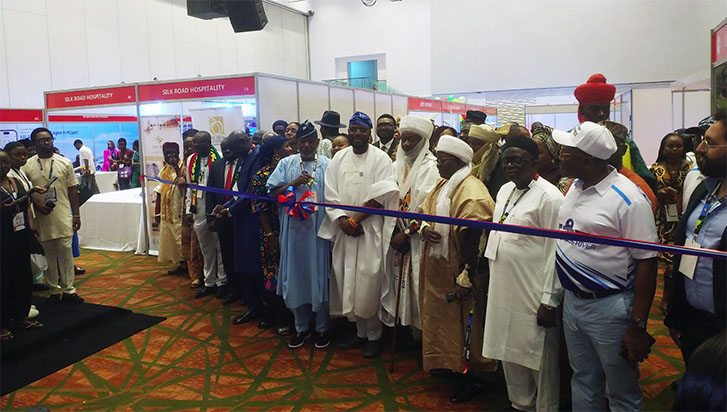By ISAAC AGBER
Copyright independent

For many industries, a five-year lifespan is the benchmark for survival.
In Nigeria’s aviation sector, however, five years is often the ceiling. Most local airlines barely live long enough to establish their brand before shutting down, leaving behind a trail of debt, grounded aircraft, and disappointed passengers.
The attrition rate is so alarming that Dr Thomas Ogungbangbe, Group Managing Director of CITA Energies, describes it as “empirical proof” of how unsustainable the business has become.
Between 2000 and 2020, the average lifespan of a Nigerian airline was calculated at just five years. Over the last four decades, more than 100 Nigerian airlines have gone under – a record that makes even seasoned investors think twice before venturing into the sector.
As Dr Ogungbangbe put it, “the best way to make a millionaire in dollars become poor is to go into the airline business.”
Nigeria’s High Mortality Industry
From the collapse of Nigeria Airways in the early 2000s to the disappearance of carriers like Sosoliso, ADC, and Bellview, the country has seen carriers come and go with startling frequency.
Today, only a handful remain—Air Peace, Arik Air, Ibom Air, Overland, Azman, and United Nigeria Airlines among them.
Statistics paint an even bleaker picture: in 2000, there were about 150 registered airlines; by 2006, only 28 were still flying.
By 2019, the number had shrunk to just nine scheduled operators. The mortality rate stands at more than 57%, one of the highest anywhere in the world.
How Other Airlines Fare
Nigeria’s short airline lifespans are not entirely unique.
Globally, the aviation sector is notoriously risky. A study of 218 new airlines launched worldwide between 2008 and 2010 found that only 67 survived a few years later, with those that failed averaging just 3.5 years of existence.
But, here lies the difference: in mature aviation markets, those that survive often do so for decades. Airlines like KLM (founded 1919), Qantas (1920), and Delta Air Lines (1925) have not only endured but thrived. Even younger airlines in Asia and the Middle East – such as Emirates (1985) and Qatar Airways (1993) – have become global powerhouses. Their survival is tied to supportive government policy, stable economic environments, strong maintenance infrastructure, and diversified business models.
By contrast, Nigerian carriers remain fragile, overexposed to economic shocks, and constrained by local structural bottlenecks.
The Fuel and Exchange Rate Trap
According to Dr Ogungbangbe, fuel costs alone account for 35 – 40% of airline revenue in Nigeria.
A Lagos–Abuja return flight, he explained, requires about 8,000 litres of fuel. At current rates, that could cost N8 million – before a single staff salary, tax, or maintenance bill is paid.
Compounding the problem is the exchange rate. Jet A-1 fuel and aircraft leases are paid in dollars, but airlines earn revenue in Naira. With the Naira sliding against the dollar, costs balloon while revenue dwindles. “The issue we have is in our exchange rate,” Ogungbangbe stressed. “It is not the airline bills. It is not even the fuel bill. The business is for men, not for boys.”
Maintenance: A Million-Dollar Problem
Aircraft require regular maintenance checks, the most expensive being the C-check every 18 months.
Each check can cost between $1 million and $3 million per aircraft. Nigerian airlines, lacking heavy maintenance facilities at home, must send aircraft abroad – often to Europe, the Middle East, or Ethiopia.
This not only drains foreign exchange but also leaves aircraft grounded for weeks, eroding revenue. For carriers with small fleets, even one aircraft out of service can cripple operations.
Market Size and Purchasing Power
Another barrier is market penetration. Fewer than 10 per cent of Nigerians fly regularly. As Ogungbangbe noted, the “flying orbit” in Nigeria is small, largely comprising business travellers, government officials, and the middle to upper classes. For most Nigerians, air travel remains a luxury.
This limited demand means that airlines often compete for the same small customer base, focusing heavily on trunk routes like Lagos–Abuja and Lagos–Port Harcourt. Overcrowding on these routes leaves other regions underserved, while fares remain high. In December 2024, for example, Lagos–Abuja fares surged to as high as N300,000 one-way, pricing out ordinary travellers.
Taxes, Policy, and Infrastructure Deficits
The Nigerian aviation ecosystem itself compounds the problem. Airlines are burdened with multiple taxes and levies, often duplicated across agencies. Foreign exchange is scarce. Airport infrastructure is uneven, with many regional airports ill-equipped to support consistent operations.
The lack of coordinated government policy further erodes confidence. Unlike in Europe or America, where fuel hedging, forward contracts, and credit facilities help airlines manage volatility, Nigerian carriers operate largely on a spot-purchase system, exposed to daily swings in fuel prices and exchange rates.
What Needs to Change
Experts, including Dr Ogungbangbe, argue that survival will depend on a combination of structural reforms and innovative strategies:
Fuel Procurement Reform: Allow airlines access to forward contracts or pooled fuel purchase schemes to reduce volatility.
Stronger Maintenance Infrastructure: Invest in local MRO (Maintenance, Repair, and Overhaul) facilities to save foreign exchange and reduce downtime.
Policy Consistency: Streamline taxes, provide forex support, and encourage long-term investment through incentives.
Market Expansion: Develop underserved regional routes to grow the flying population, not just trunk routes.
Transparency and Trust: Provide clearer breakdowns of ticket pricing to help passengers understand costs.
But despite the grim statistics, Ogungbangbe insists the Nigerian market still has growth potential. The economy remains elastic, and as purchasing power improves, more people could be recruited “from the road into the flying orbit.”
But for that to happen, airlines must not only survive long enough to benefit but also learn from global models that have turned aviation into a long-term venture rather than a short-term gamble.
As Ogungbangbe puts it, “We need to pay the requisite bill that will make them profitable and alive.”
Until then, Nigerian skies may continue to witness the cycle of new airlines rising with fanfare – only to fold before their fifth anniversary.



